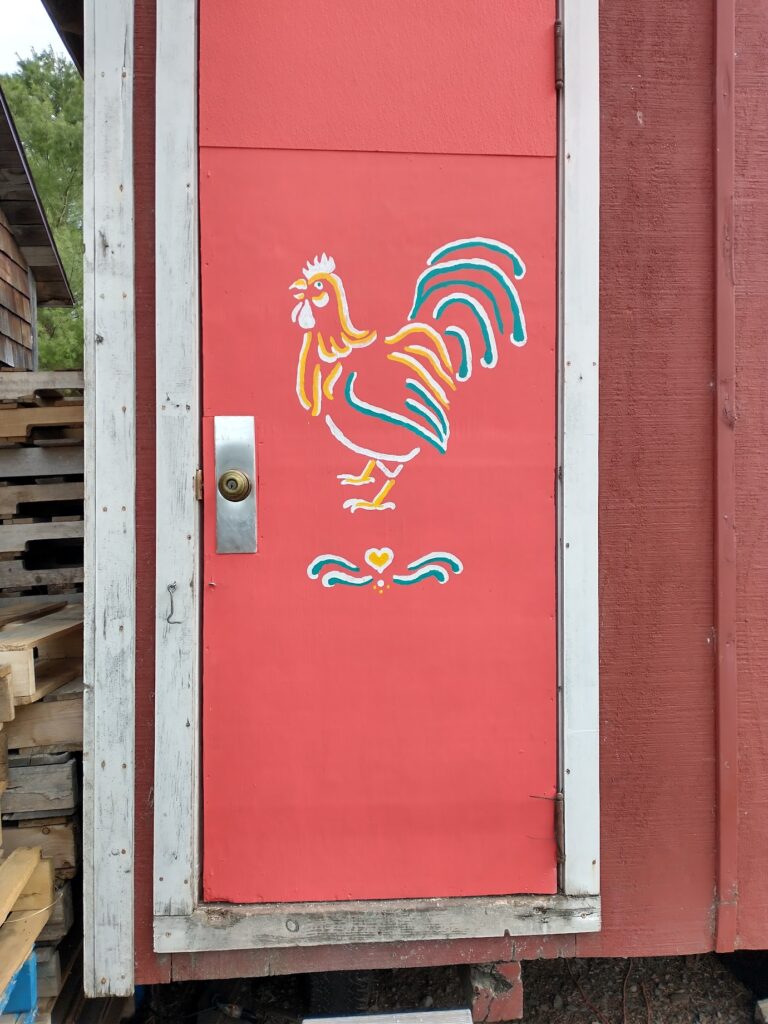From artist and farmer and Vesterheim instructor Laura Berlage!
“What is art?” was an omnipresent question for me at grad school at Goddard College. Some argued that everything was art and that everyone was an artist, while others had differing opinions. How does one even put a definition on what art is (or isn’t), given how expanded our understanding of art practice can be compared with classical focuses on painting and sculpture.
One of my favorite potential definitions of art is “to make special.” I particularly like this definition because it relies on the intent of the maker or the experience of the perceiver as the qualifier—not the medium, not the era, not a pedigree. It could be a meal as much as a statue.
Folk-art expressions are squarely in the “to make special” camp. The expressions are direct and accessible, without assumed pretension. Often, the mundane is transformed into something special, such as a recipe box adorned with beautiful rosemaling (Norwegian decorative painting), the handle of a spoon lovingly carved or burnt with designs and figures, a bed quilt creatively pieced with thoughtful attention to color and design. When you observe or experience these pieces, you can feel the maker’s intent to make special and impart a feeling of specialness to those who receive or use it.
Touches of specialness can be pre-planned or spontaneous, meticulous or whimsical. The latter sparked a recent project on my farm.
Our first mobile hen house was a wooden coop built on a hay wagon. For years, it served us out in the pasture, but the straight sides and height made it tippy and vulnerable to winds. We modified future designs of our mobile summer hen houses to be greenhouse-shaped with rounded tops that were lighter weight and resilient to the wind, and we pulled the red wooden version into the barnyard near a machine shed for safety. This coop now serves as the halfway house for chicks once they’ve graduated from the small, insulated brooder coop but aren’t big enough to be in their outdoor chicken tractor pens.
This coop offers a great transition space, with more room and air, as the chicks grow and feather out. But the door to the coop (which admittedly was an interior door from an old cabin pressed into service) was literally falling apart. It was time for a door makeover, just before this year’s Red Ranger meat chicks needed to move in.
We rebuilt the door, finishing it off with donated paint that has been worked up “too pink” for the intended owner. It wasn’t the same red as the rest of the building, but hey, it’s a chicken coop, and it was free paint, so no complaints. The “scarlet tanager” salmony red struck me as I passed by during chores after its installation.
“That looks like it wants to be painted with something fun,” I offered.
“That’s exactly what we thought!” My sister Kara agreed. “You should paint it.”
We rummaged through the supply of paint cans in the cupboard inside the entrance of the farmhouse, finding leftover cans of colors used to paint the barn quilt that hangs on Farmstead Creamery. We also found a bag of random plastic paint brushes from when we were kids and enough paint stirring sticks to embark on the project. It reminded me how art will exist under all conditions, and how often folk artists have found ways to work with whatever they had, rather than supplying themselves with the very best of materials before beginning. If you are unafraid to do what you can with what you have, your work can flourish under any adversity.
I also knew that I didn’t have much time for the project. All the animals to tend plus a garden to prepare meant this would be worked into the cracks of the day. Plan out a design? Nah, just go for it!
Drawing chickens is a pastime I’ve enjoyed since I was 11 years old and fell in love with the idea of having chickens. I doodled chickens in the margins of my math book, sketched the individual chickens we raised the summer of 1999, have worked chickens into tapestries, punch needle rug hooked pieces, and needle felting. Making a chicken with sloppy wet paint and awkward brushes would be a fun new way to doodle a rooster on a chicken coop door.
I started with white, working in suggestive strokes rather than having to draw out the whole image. Playing with “what is object and what is background,” strokes of yellow and teal added flair and fun. A heart with flourishes at the bottom brought the piece together. When finished, I stood back and smiled. The painted rooster did make the new door feel special, and it gives me smiles every time I use it or pass by.
This week, think about how you can bring more specialness into your world. Even the smallest acts can bring a smile. See you down on the farm sometime.
Laura Berlage is a co-owner of North Star Homestead Farms, LLC and Farmstead Creamery, www.northstarhomestead.com.
You can find out more about her, along with a link to classes she’s currently teaching at Vesterheim, here.

